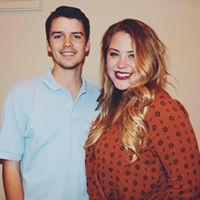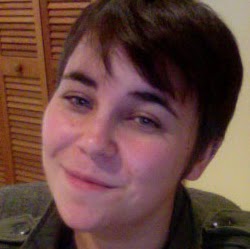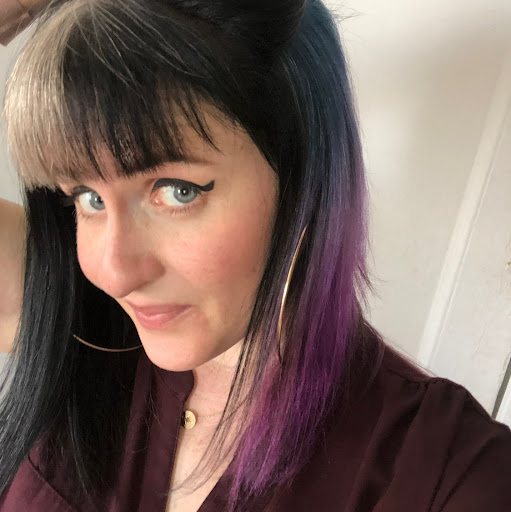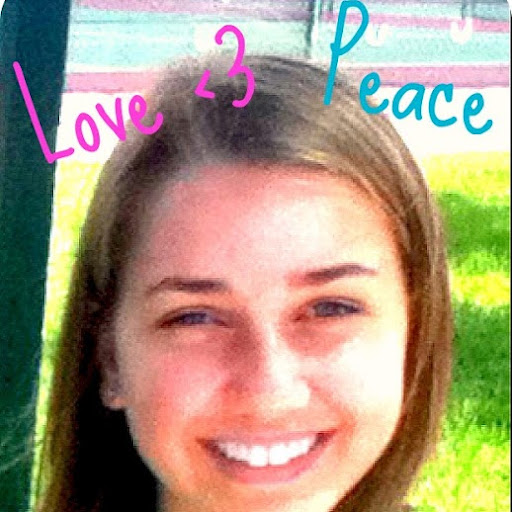Emily C Gallagher
age ~32
from Boston, MA
- Also known as:
-
- Emily Claire Gallagher
- Phone and address:
- 222 Neponset Ave #3, Boston, MA 02122
Emily Gallagher Phones & Addresses
- 222 Neponset Ave #3, Dorchester, MA 02122
- 22 Macdonald St, Hyde Park, MA 02136 • 6173611288
- Boston, MA
- Burlington, VT
Us Patents
-
Light Scattering Euvl Mask
view source -
US Patent:7198872, Apr 3, 2007
-
Filed:May 25, 2004
-
Appl. No.:10/709733
-
Inventors:Emily E. Gallagher - Burlington VT, US
Louis M. Kindt - Milton VT, US
Carey W. Thiel - South Burlington VT, US -
Assignee:International Business Machines Corporation - Armonk NY
-
International Classification:G03F 1/00
-
US Classification:430 5
-
Abstract:A light scattering EUVL mask and a method of forming the same comprises depositing a crystalline silicon layer over an ultra low expansion substrate, depositing a hardmask over the crystalline silicon layer, patterning the hardmask; etching the crystalline silicon layer, removing the hardmask, and depositing a Mo/Si layer over the crystalline silicon layer, wherein etched regions of the crystalline silicon layer comprise uneven surfaces in the etched regions. The method further comprises depositing a photoresist mask over the hardmask, creating a pattern in the photoresist mask, and transferring the pattern to the hardmask. The Mo/Si layer comprises uneven surfaces conformal with the sloped surfaces of the crystalline silicon layer, wherein the sloped surfaces of the Mo/Si layer may be configured as roughened, jagged, sloped, or curved surfaces, wherein the uneven surfaces deflect incoming extreme ultraviolet radiation waves to avoid collection by exposure optics and prevent printing onto a semiconductor wafer.
-
Method For Adjusting Lithographic Mask Flatness Using Thermally Induced Pellicle Stress
view source -
US Patent:7355680, Apr 8, 2008
-
Filed:Jan 5, 2005
-
Appl. No.:10/905453
-
Inventors:Emily F. Gallagher - Burlington VT, US
Louis M. Kindt - Milton VT, US
James A. Slinkman - Montpelier VT, US
Richard E. Wistrom - Essex Junction VT, US -
Assignee:International Business Machines Corporation - Armonk NY
-
International Classification:G03B 27/62
G03F 9/00 -
US Classification:355 75, 430 5
-
Abstract:A method for adjusting the flatness of a lithographic mask includes determining an initial mask flatness of the mask, determining an applied stress for bringing the mask to a desired mask flatness, and determining a mounting temperature of a pellicle frame to be mounted to the mask, the mounting temperature corresponding to the applied stress. The actual temperature of the pellicle frame is adjusted to the determined mounting temperature.
-
System And Method For Storing And Transporting Photomasks In Fluid
view source -
US Patent:7537114, May 26, 2009
-
Filed:Jan 25, 2006
-
Appl. No.:11/275694
-
Inventors:Emily F. Gallagher - Burlington VT, US
Louis M. Kindt - Milton VT, US -
Assignee:International Business Machines Corporation - Armonk NY
-
International Classification:B65D 85/38
G03F 1/00
G03C 11/00
H01L 21/00 -
US Classification:2063161, 430 5, 430644, 438800
-
Abstract:An apparatus for and method of storing and transporting a photomask. A photomask storage container has fluid-tight walls, an opening for moving the photomask into and out of the container, and a sealable inlet for a storage fluid. The method includes placing the photomask in the storage container through the opening, introducing a storage fluid into the container through the inlet, closing the container opening and sealing the storage fluid inlet, whereby the storage fluid is essentially inert with respect to the photomask. The method then includes opening the container opening and contacting a surface of the photomask with an alcohol-containing gas while removing the photomask from the storage container to remove the storage fluid from the photomask surface.
-
Method For Adjusting Lithographic Mask Flatness Using Thermally Induced Pellicle Stress
view source -
US Patent:7826038, Nov 2, 2010
-
Filed:Feb 12, 2008
-
Appl. No.:12/029506
-
Inventors:Emily F. Gallagher - Burlington VT, US
Louis M. Kindt - Milton VT, US
James A. Slinkman - Montpellier VT, US
Richard E. Wistron - Essex Junction VT, US -
Assignee:International Business Machines Corporation - Armonk NY
-
International Classification:G03B 27/62
G03F 9/00 -
US Classification:355 75, 430 5
-
Abstract:A method for adjusting the flatness of a lithographic mask includes determining an initial mask flatness of the mask, determining an applied stress for bringing the mask to a desired mask flatness, and determining a mounting temperature of a pellicle frame to be mounted to the mask, the mounting temperature corresponding to the applied stress. The actual temperature of the pellicle frame is adjusted to the determined mounting temperature, and the pellicle frame is mounted to the mask at the mounting temperature.
-
Mask Program Defect Test
view source -
US Patent:8538129, Sep 17, 2013
-
Filed:Oct 9, 2009
-
Appl. No.:12/576597
-
Inventors:Karen D. Badger - Milton VT, US
Emily E Gallagher - Burlington VT, US
Christoper Magg - Essex Junction VT, US -
Assignee:International Business Machines Corporation - Armonk NY
-
International Classification:G06K 9/00
-
US Classification:382144
-
Abstract:A method for characterizing the resolution of mask inspection tool using a test mask and a database containing defect data. A variety of defect types and sizes is programmed into the database, and the database is then used to inspect the defect-free mask. All defects programmed into the database are not captured in performing the method, so the resolution capability of an inspection tool can be determined.
-
Reflective Mask Structure And Method Of Formation
view source -
US Patent:20040131947, Jul 8, 2004
-
Filed:Jan 7, 2003
-
Appl. No.:10/248300
-
Inventors:Emily Fisch Gallagher - Burlington VT, US
Louis Kindt - Milton VT, US
Mark Lawliss - South Burlington VT, US
Kenneth Racette - Fairfax VT, US
Carey Thiel - South Burlington VT, US -
Assignee:International Business Machines Corporation - Armonk NY
-
International Classification:G03F009/00
-
US Classification:430/005000
-
Abstract:A reflective mask, useful in extreme ultraviolet lithography (EUVL), and method of formation are disclosed. Instead of patterning an absorbing film stack, as is the case with conventional EUVL masks, the reflective film stack itself is patterned and etched to form a trench in the reflective stack. A hard mask is deposited directly on the reflective substrate. It is patterned and repaired. Then the reflective film is removed in the patterned area to create absorbing trenches. The hard mask may then be stripped or remain in place on the final mask. A liner may be formed on the trench to absorb radiation and protect the sidewalls.
-
Monolithic Hard Pellicle
view source -
US Patent:20050243452, Nov 3, 2005
-
Filed:Apr 28, 2004
-
Appl. No.:10/709326
-
Inventors:Emily Gallagher - Burlington VT, US
Rogert Leidy - Burlington VT, US
Michael Lercel - Williston VT, US
Kenneth Racette - Fairfax VT, US
Andrew Watts - Essex VT, US -
Assignee:INTERNATIONAL BUSINESS MACHINES CORPORATION - Armonk NY
-
International Classification:G02B005/22
-
US Classification:359888000, 359896000
-
Abstract:A monolithic optical pellicle and method of making used to protect a photomask during photolithography processing. The monolithic optical pellicle is comprised of a pellicle plate having a recessed central portion integrally formed with a perimeter frame of the pellicle plate such that it is a one-piece optical pellicle. The monolithic optical pellicle comprises a material of sufficient rigidity to minimize distortions in and maximize durability of the pellicle when used in combination with the recessed portion having a thickness that prevents sagging thereof due to applied forces on the resultant monolithic optical pellicle. This recessed central portion is the optical pellicle portion of the present monolithic optical pellicle, while the integral perimeter frame is used to attach the monolithic optical pellicle at the desired stand-off distance to a photomask. The monolithic optical pellicle preferably comprises a material that is transparent to an exposure field at about 157 nm wavelengths.
-
Etching Apparatus For Semiconductor Fabrication
view source -
US Patent:20060191638, Aug 31, 2006
-
Filed:Feb 28, 2005
-
Appl. No.:10/906627
-
Inventors:Timothy Dalton - Ridgefield CT, US
Emily Gallagher - Burlington VT, US
Louis Kindt - Milton VT, US
Carey Thiel - Williston VT, US
Andrew Watts - Essex VT, US -
Assignee:INTERNATIONAL BUSINESS MACHINES CORPORATION - Armonk NY
-
International Classification:C23F 1/00
C23C 16/00 -
US Classification:156345430, 11872300E
-
Abstract:An apparatus (and method for operating the same) which allows etching different substrate etch areas of a substrate having different pattern densities at essentially the same etch rate. The apparatus includes (a) a chamber; (b) an anode and a cathode in the chamber; and (c) a bias power system coupled to the cathode, wherein the cathode includes multiple cathode segments. The operation method includes the steps of: (i) placing a substrate to be etched between the anode and cathode, wherein the substrate includes N substrate etch areas, and the N substrate etch areas are directly above the N cathode segments; (ii) determining N bias powers which, when being applied to the N cathode segments during an etching of the substrate, will result in essentially a same etch rate for the N substrate etch areas; and (iii) using the bias power system to apply the N bias powers the N cathode segments.
Wikipedia References

Emily Gallagher
Medicine Doctors

Emily Gallagher
view sourceSpecialties:
Pediatrics
Work:
UW PhysiciansChildrens Craniofacial Center
4800 Sand Pt Way NE, Seattle, WA 98105
2069872208 (phone), 2069873064 (fax)
4800 Sand Pt Way NE, Seattle, WA 98105
2069872208 (phone), 2069873064 (fax)
Languages:
English
Spanish
Spanish
Description:
Dr. Gallagher works in Seattle, WA and specializes in Pediatrics. Dr. Gallagher is affiliated with Seattle Childrens Hospital and University Of Washington Medical Center.
License Records
Emily Reagan Gallagher
License #:
CPT.006110 - Expired
Issued Date:
Nov 14, 2003
Expiration Date:
Jun 30, 2007
Type:
Certified Pharmacy Technician
Emily Jane Gallagher
License #:
24336 - Active
Category:
Nursing
Issued Date:
Nov 19, 2013
Effective Date:
Jul 7, 2016
Expiration Date:
Oct 31, 2017
Type:
Licensed Practical Nurse
Emily Jane Gallagher
License #:
73573 - Expired
Category:
Nursing Support
Issued Date:
Aug 30, 2013
Effective Date:
Nov 19, 2013
Expiration Date:
Aug 30, 2015
Type:
Medication Aide - 40 Hour
Emily Jane Gallagher
License #:
68092 - Expired
Category:
Nursing Support
Issued Date:
Jul 1, 2011
Effective Date:
Nov 19, 2013
Expiration Date:
Jul 1, 2013
Type:
Medication Aide - 40 Hour
Emily Jane Gallagher
License #:
83736 - Expired
Category:
Nursing Support
Issued Date:
May 20, 2008
Effective Date:
Nov 19, 2013
Type:
Nurse Aide
Emily Carline Gallagher
License #:
NA26152-T - Active
Category:
Nursing Assistant
Issued Date:
Feb 21, 2017
Expiration Date:
Jun 21, 2017
Type:
Nursing Assistant-120 day Permit
Classmates

Emily Gallagher
view sourceSchools:
Iola High School Iola KS 2004-2008
Community:
Ricky Narvaez, John Maier, Tanner Thornton, Brandon Aiello, Jessica Rowe

Emily Gallagher
view sourceSchools:
Maugham Elementary School Tenafly NJ 1998-2002
Community:
Binder Tal, Leah Silberman, Jordan Frankel, Julia Harte, David Foley, Yogev Shlomowich, Lisa Hart, Jake Lazarus, Myles Field

Emily Gallagher
view sourceSchools:
Rapid Run Middle School Cincinnati OH 2000-2004
Community:
Matt Heath, Elizabeth Massengale, Andrew Bieber, Bradley Traylor, Stephen Louie, Maddie Bell

Emily Gallagher (Harper)
view sourceSchools:
Central High School Manchester NH 1989-1993
Community:
Joyce Kraeuter, Denise Desrochers

Emily Gallagher
view sourceSchools:
Masconomet Regional High School Topsfield MA 1998-2002
Community:
Nicole Suke, Benjamin Libby, Corey Southard, Graham Hill

Emily Gallagher
view sourceSchools:
Cheat Lake Middle School Morgantown WV 2000-2004
Community:
Judith Langan, Shannon Montgomery, Lisa Hawker, Felicia Reckart, April Perdue, Greg Petrovic, Dylan Woodring, Ben Greer, Bob Thompson, Rebecca Gaul

Emily Gallagher
view sourceSchools:
Turtle Lake Elementary School Shoreview MN 2001-2005
Community:
Cassandra Monster, Adam Bender, Brian Anderson, Hannah Lindstrom, Diann Breezee, Kevin Mcevoy

Emily Gallagher
view sourceSchools:
St. Mary's Academy Nauvoo IL 1991-1995
Community:
Nicole Gripman, Maggie Zajauskas, Jennifer Roof, Amy Vaughan, Samantha Prasser, Kelly O'donnell, Michele Riley, Bethany Brooks, Nuala Fleming, Haerim Pahn, Allison Doherty
Youtube
Flickr

Emily Gallagher
view source
Emily Lauren Gallagher
view source
Emily Ward Gallagher
view source
Emily Elizabeth Gallagher
view source
Emily Gallagher Obryan
view source
Megan Emily Gallagher
view source
Emily C. Gallagher
view source
Emily Gallagher
view sourceMyspace
Googleplus

Emily Gallagher
Work:
Emily gallagher - Cc (8)
Tagline:
I do darma
Bragging Rights:
No

Emily Gallagher
Work:
Touchdown PR (11)

Emily Gallagher
Education:
Aurora High School

Emily Gallagher
Tagline:
O harro!

Emily Gallagher

Emily Gallagher

Emily Gallagher

Emily Gallagher
Get Report for Emily C Gallagher from Boston, MA, age ~32













